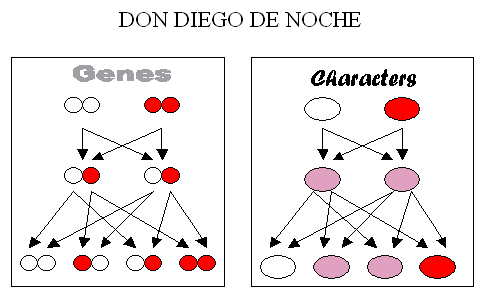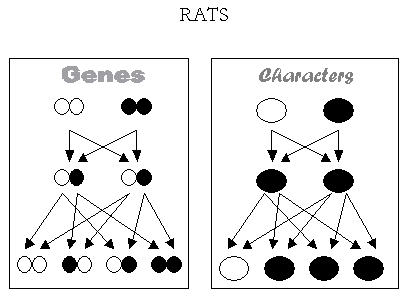9.c) Dominant character and Mendel's laws of heredity
Gregor Mendel, an Austrian Augustine monk, discovered heredity's rules in his investigations on hybrids in plants (1865).
Alongside the theories of human origin and evolution in their strict sense is Mendel's Theory on genetic inheritance, whose fundamental elements are gene combinations and their dominant or recessive character.
The theory of heredity of Mendel consists of the following two laws:
The Law of Scission
Factors inherited from parents join the resulting hybrid and separate when the combination reaches the adult stage and produces its sexual cells.

This first law of heredity can become clear using the example of white and red varieties in the Marvel of Peru plant:
-
The first generation produces all pink flowers. The second generation has one white, two pinks, and one red flower.
-
The first generation produces all pink flowers. The second generation has one white, two pinks, and one red flower.
-
The Law of Dominant Character
The dominant character does not destroy the recessive character in the hybrid; it merely conceals it.
An example of the theory of Mendel on this law of heredity is the cross between white and grey rats:The first generation produces grey rats. The second has one white and three grey rats.
-
The appearance of white rats in a ratio of 1 to 4 in the second generation shows that the white (recessive gene) character remains hidden.

The example of the law of heredity of the dominant character included only one character (mono-hybridization). Still, two or more (di-hybridization or poli-hybridization) can also happen, and the evolutionary process would be similar, although the possible combinations would grow in geometric progression.
See chapter III about criticism of Mendel's theory
